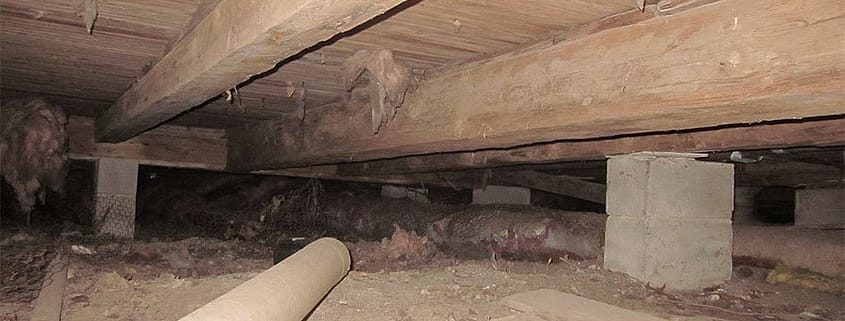Home Inspection – House Piles – What’s underneath your house?
What’s underneath your house?
Buying a house is probably the single most expensive purchase you’ll ever make.
If you’re mortgaged up to the hilt when you move in – as many people are when they buy a home or invest property – then finances can be strained if there are any immediate repair bills needed. One of the biggest things that you’ll want your building inspector to check for are the piles under your house.
What are piles?
If you look under pretty much any house built in this country, you’ll see that the foundations are generally formed by wooden poles or posts, or concrete piles with wooden jack studs. Their purpose is to evenly distribute the house’s weight across the soil. The house, in turn, should be built to distribute its weight evenly over the piles so that the house stands straight (and not on a slope).
Some older houses are built on tree stump piles. Nothing lasts forever, and over time you can find that the piles have rotted away and the house’s weight has become unevenly distributed. Sometimes you’ll find that a house has been re-piled. A couple of signs that this has happened are that the piles have been made from tanalised (H5) pine. It’s also fairly common to spot a few new piles in with old wooden ones. Today’s Building Standard requires foundations to have seismic connectors to give the foundation strength in an earthquake.
Does my house need re-piling?
Your house may need re-piling if some or all of the piles are moving. Moving causes the house to twist, and crack, causing damage. To stop the damage getting any worse, it will be necessary to re-pile your house. Sometimes it’s really obvious that your house will need re-piling, such as when it’s sloping – although usually the signs are more subtle.
What does re-piling involve?
Essentially you’ll have to dig new piles into the ground and realign the house to its new foundation. It’s also important to understand what caused the piles to move in the first place. Was it poor soil, rotting wood, or water damage? Some of these issues may need to be fixed before you can even think about re-piling.
If re-piling sounds like a hard process…that’s because it is. Re-piling is a major job, and isn’t for the typical DIYer! This is Restricted Building Work and is required to be carried out by a Licenced Building Practitioner, and may need a Building Consent. That’s why it’s so important to find out these things before you sign a contract. By negotiating for something to be fixed, or re-negotiating prices based on a problem that you’ve found, a building inspection report can more than pay for itself.
Needing a Property Inspection?
We offer detailed and thorough property inspections with a same-day turnaround!




